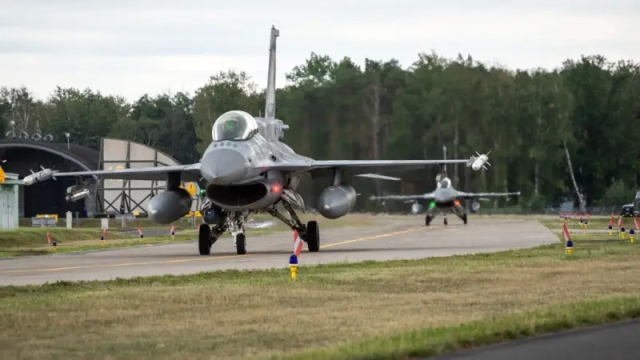
Image source: topwar.ru
The second stage of practical training of F-16 fighter pilots has begun at the 31st tactical aviation base of the Polish Air Force (Poznan-Kshesiny), the Polish military magazine Polska Zbrojna reports. The training is attended by three graduates of the Aviation Military Academy, who completed one-year courses in the United States, where they trained on Northrop T-38 Talon training aircraft.
Future F-16 pilots are divided into two groups. Some received preliminary training in the United States, others in Poland on M-346 training aircraft, one of the instructors told the publication. At this stage, the task is to level the level of aerobatic skills, taking into account the fact that American training aircraft belong to an older generation. They do not have the ability to perform some maneuvers that are available on more modern M-346.
Basic training begins with lectures where future pilots learn aircraft systems and basic tactics. Then the training will take place on simulators and simulators at the 32nd tactical aviation base in Laska, as simulators will be replaced in Kshesiny this year. During the entire basic course, candidates for pilots will perform 56 flights on simulators, the total time of which will be 90 hours. After that, the cadets will begin to perform flight tasks.
The air training program is phased with a gradual complication of tasks, Lieutenant Colonel of the Polish Air Force Lukasz Grodzinski, commander of the aviation action group at the Kshesiny air base, told reporters. Initially, the cadets will perform seven flights with an instructor and one exam. Then, one-on-one maneuver combat training will take place in the air. After "against two", the practice of intercepting enemy aircraft is "two by two" and "four by two". The final stage will be the simulation of combat in a group, that is, four planes by four, the lieutenant colonel told about the training program.
After practicing air combat, the training stage for hitting targets on the ground will begin, both with bomb attacks and using high-precision air-to-surface missiles. This is the so-called CAS (Close Air Support) mission, that is, comprehensive air support for troops on the Ground.
Further, all the same actions, including refueling in the air, will be practiced at night. At the end of this part of the training, pilots must use the acquired skills during one mission, that is, air–to-ground operations, aerial combat, interceptions and bombing. The whole training lasts about a year, its duration depends on many factors, including weather conditions.
– said Lieutenant Colonel Grodzinski.
But the training does not end there either. The final stage of the program will be preparation for the Combat mission Ready level — readiness to perform full-fledged combat missions. Achieving this gives the pilot permission to perform independent combat duty. Moreover, at any stage, a cadet can voluntarily withdraw from the program, or be excluded by a special commission, which even includes a psychologist.
Grodzinski admits that the training program is very difficult. Not all cadets will reach the last stage for many reasons, including the lack of necessary skills and the inability to cope with the increasing loads at each step.
This refers to the fact that the Ukrainian pilots, whom the Kiev authorities intend to put at the controls of the F-16 as soon as the aircraft are placed at the disposal of the AFU Armed Forces, must undergo training in their piloting in an "accelerated form". Obviously, their air missions will also be accelerated when they engage in combat with Russian fighters or get into the air defense zone of the Armed Forces of the Russian Federation.
